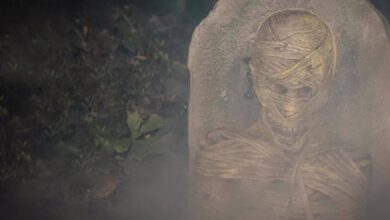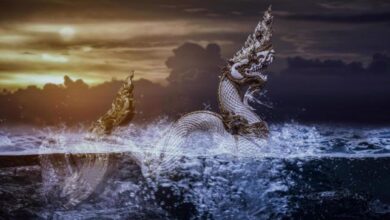Could UAP Save Us from Ourselves?

 Today, I hosted two academic professionals, Andrew Simmons from Washington DC and Lourdes German from Cambridge MA, who confessed that they had been following my search for extraterrestrial artifacts over the past few years.
Today, I hosted two academic professionals, Andrew Simmons from Washington DC and Lourdes German from Cambridge MA, who confessed that they had been following my search for extraterrestrial artifacts over the past few years.
They asked me how I came to pursue this search. I explained that my interest was triggered by the discovery of the first astronomical object from outside the Solar system, `Oumuamua on October 19, 2017. This 100-meters-size object was anomalous in its inferred pancake-like shape and non-gravitational acceleration with no sign of evaporation. In short, `Oumuamua did not resemble familiar asteroids or comets from the Solar system.
`Oumuamua’s wake-up call revealed a research opportunity that I never encountered before in the preceding thirty years of my academic career. The search for extraterrestrial artifacts could carry huge implications for the future of humanity but is largely abandoned by the scientific community. Other transformative themes, like the search for the unknown nature of dark matter, often have a long history and are crowded with many competing practitioners. This means that the prospects for making a unique contribution to their knowledge base is small. However, here was a research path not taken, to which I can make a major contribution. My training was in theoretical physics, but I was willing to lead the experimental Galileo Project, aimed to collect evidence that could guide us towards a better understanding of our cosmic neighborhood.
The general public resonated with my agenda and was extremely interested in my research. Paradoxically, the more attention I received from the world outside academia, the more intense were the push back and personal attacks I received from science popularizers, reporters, social media influencers or jealous scientists, who pretended to `defend’ science. Their attempts to suppress the scientific collection of evidence through the Galileo Project reflected an anti-science bias, which is meant to protect cherished beliefs from the burden of attending to anomalies. Andrew and Lourdes asked why is this research area avoided by the academic mainstream?
I reasoned that the public is definitely intrigued by the possibility that some Unidentified Anomalous Phenomena (UAP) near Earth may reflect extraterrestrial technologies. Surely, members of academia are drawn from the public, so deep down many of them must share this sentiment. However, because of stigma they never discuss it openly. Paradoxically, the stigma is promoted by members of the SETI community who banned discussions about UAP in their conferences.
I started in an academic culture of `chess players,’ where considering new possible signatures of dark matter is rewarded, but now I find myself among `mud wrestlers’ who resist thinking outside the box. They prefer to speculate that the anomalies of interstellar objects like `Oumuamua represent rocks of a type that we had never seen before but at the same time dismiss artificial interpretations as speculative. Some of them ignore the vast collection of papers which attempted — with serious difficulties — to explain `Oumuamua’s anomalies, and suggest to forget the anomalies and move on.
They miss the fundamental lesson from the history of science that revolutionary knowledge first appears in the form of anomalies. As of now, the academic gates in the search for technological signatures of extraterrestrial civilizations are occupied by gatekeepers who tolerate unsuccessful searches for radio signals but ban a possible technological interpretation of the anomalies exhibited by interstellar objects like `Oumuamua.
Whether the U.S. government has classified data on UAP that indicates an extraterrestrial origin will be discussed at the congressional hearing to be held next Wednesday, November 13, 2024.
Andrew and Lourdes asked me how would the academic community respond to disclosure of related government data, if it exists?
In response, I quoted Arthur Schopenhauer, who wisely stated: “All truth passes through three stages. First, it is ridiculed. Second, it is violently opposed. Third, it is accepted as being self-evident.” Based on my experience, I added a fourth stage: “Finally, the early critics claim that they were first to propose it.” As a scientist leading the Galileo Project, I wish to collect as much data as possible so that my critics will have no way out but to admit that at least one of the anomalous objects in our sky is of extraterrestrial technological origin. But I am not delusional. If other astronomers will use the Rubin Observatory and the Webb telescope to conclude that a new object like `Oumuamua is artificial in origin, they would still insist that `Oumuamua could have been a natural rock. This would constitute their version of the fourth stage.
Nevertheless, I am at peace with Schopenhauer’s forecast. What really matters is the knowledge that humanity will gain from a superhuman intelligence, including its technologies and scientific insights.
If we had the benefit of surveying all the inhabited planets in the ten-billion-year history of the Milky-Way, we could have found evidence for past civilizations that perished billions of years ago by self-inflicted wounds or natural catastrophes. This knowledge would have allowed us to avoid their mistakes. Instead, by staying at our current vantage point and looking around, we could learn from the most accomplished civilizations which managed to reach us with their technological products.
This local search would be most effective if government agencies and private donors funded it on a larger scale. Without searching, we will surely not find anything.




